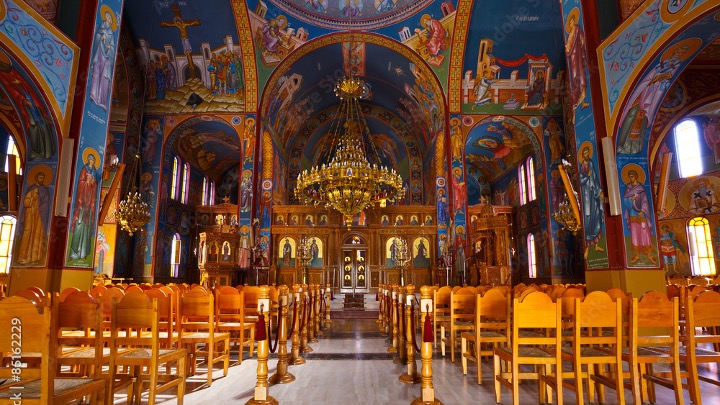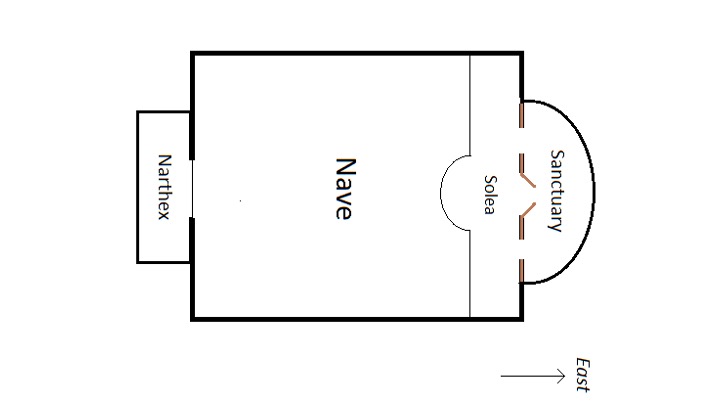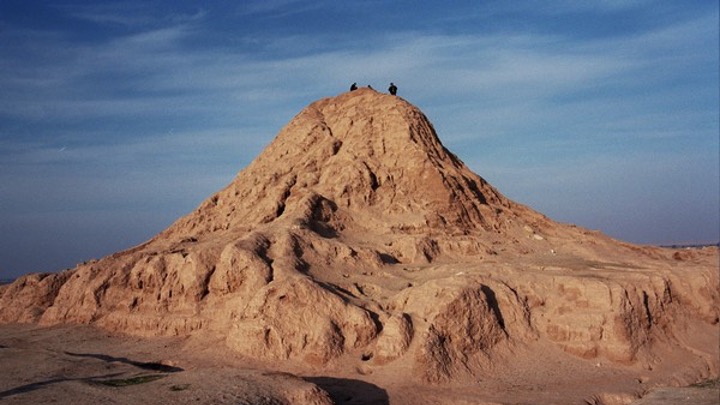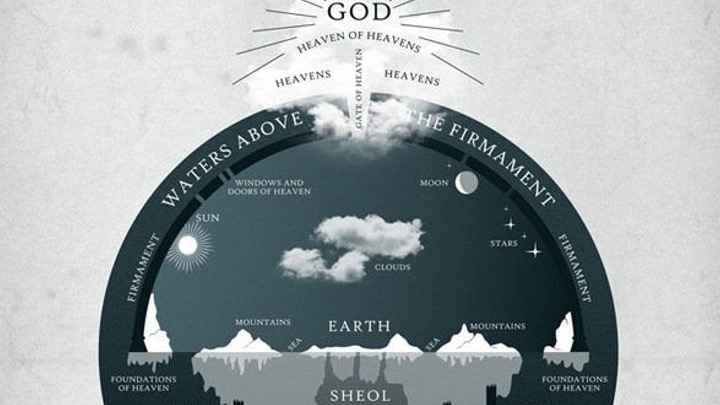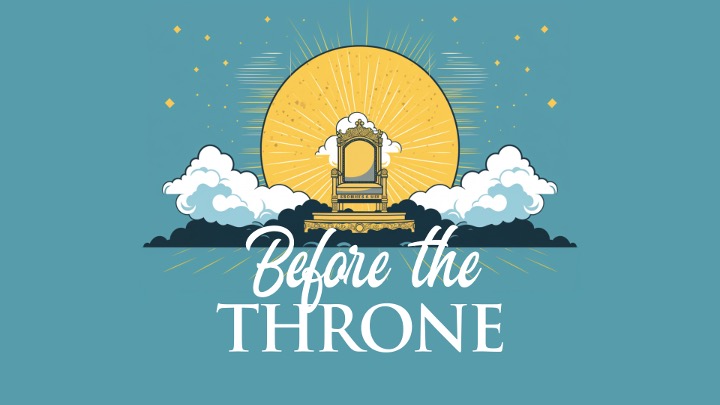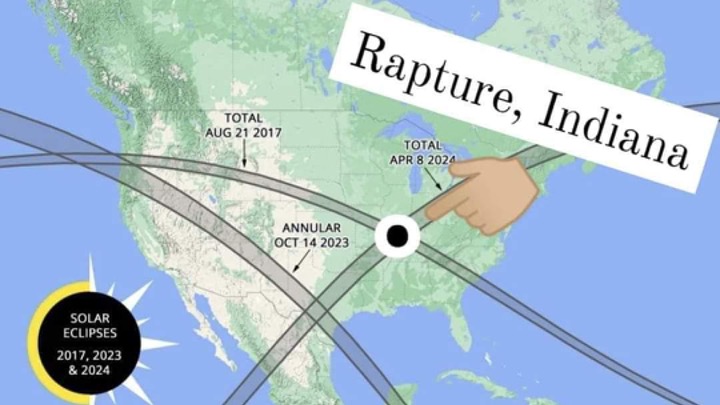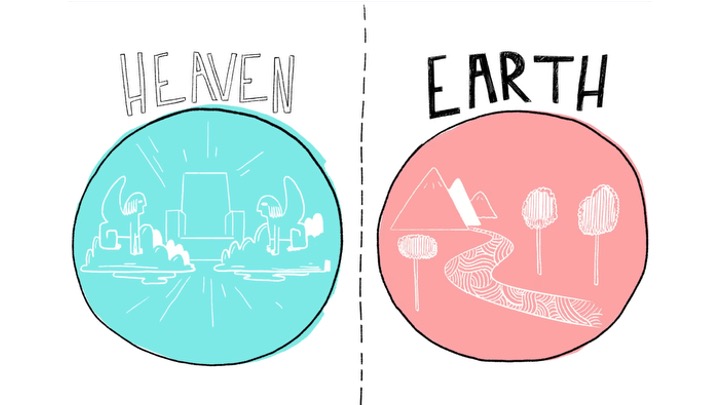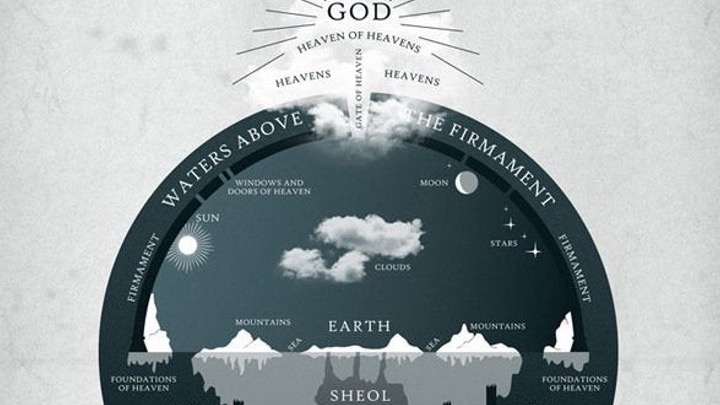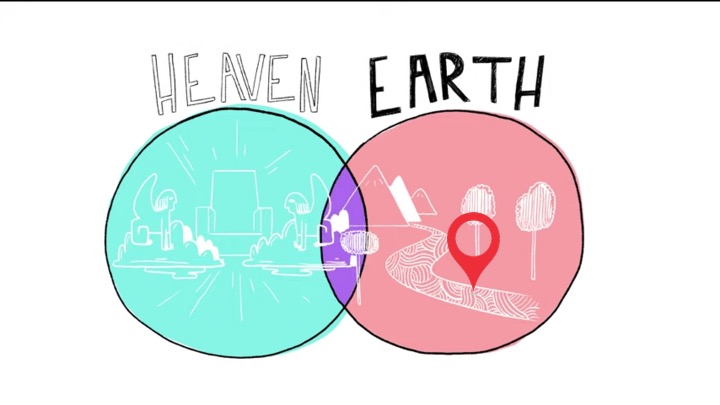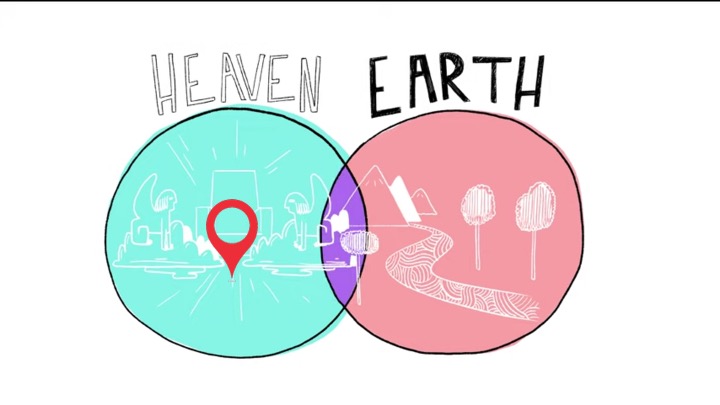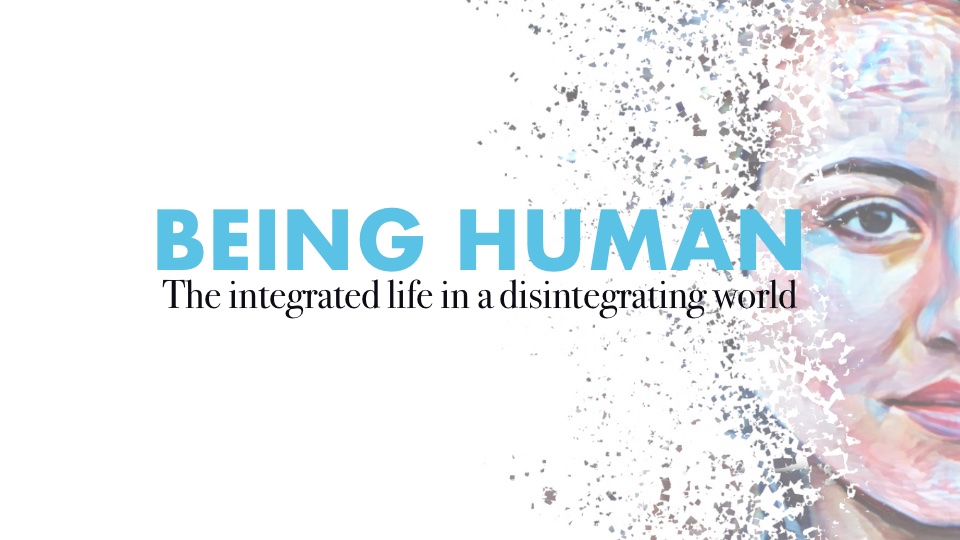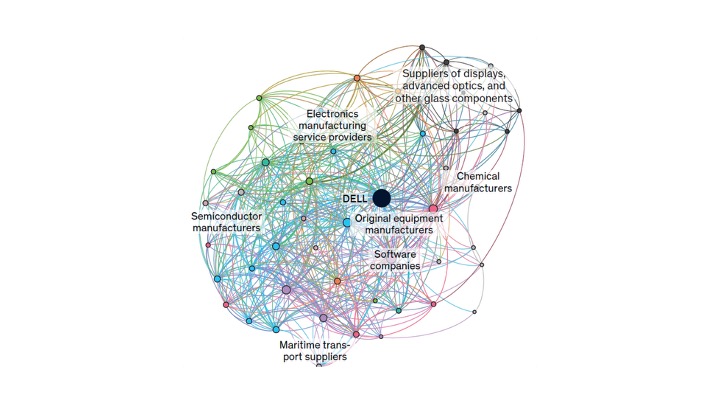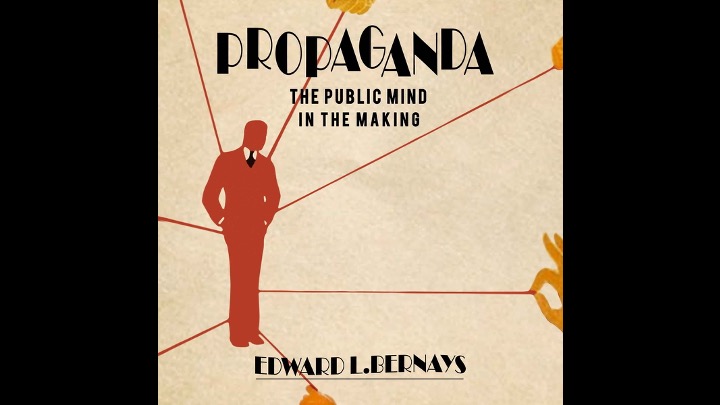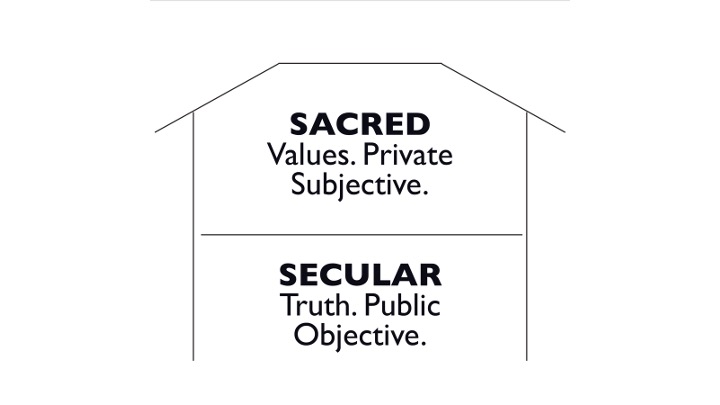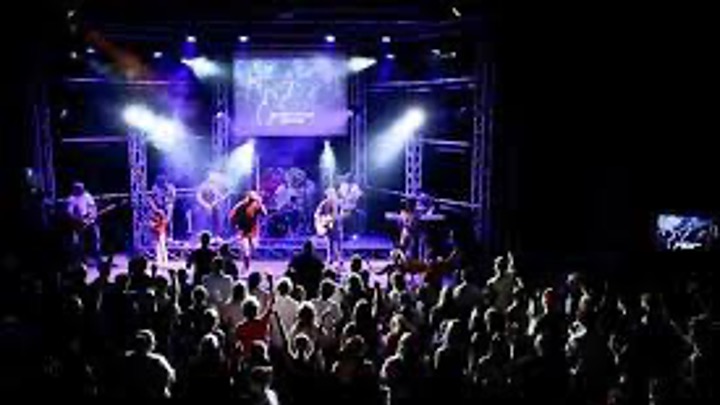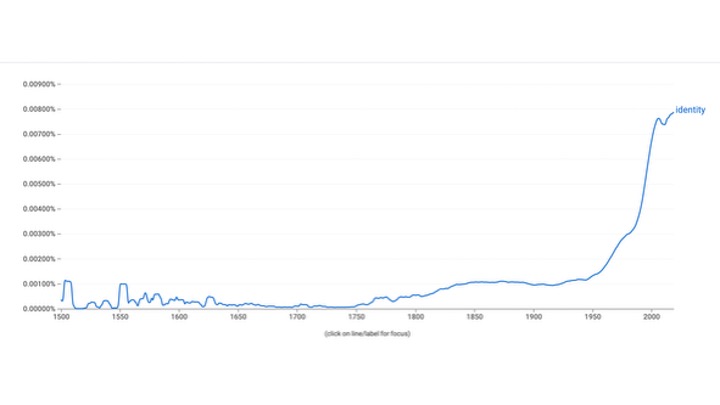This was part five of a sermon series preached at City South Presbyterian Church in 2024. You can listen to this on our podcast, or watch the video.
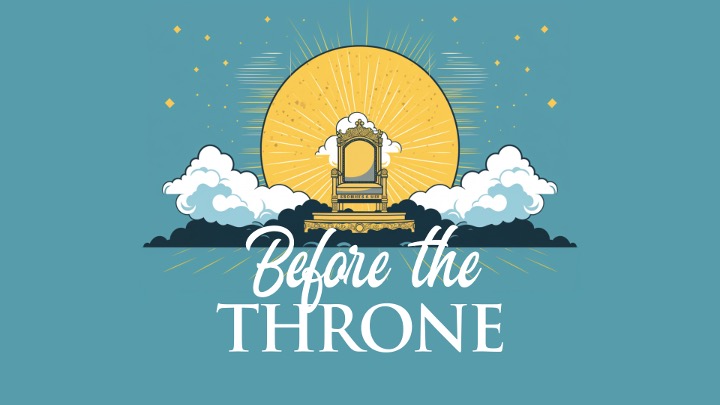
I want you to imagine you are in the new creation — heaven and earth have merged, and you are sitting with the prophet Ezekiel.
You are having a chat — and you are trying to explain solar power to him — we just dragged these glass panels up on the roof — and they did not just reflect the radiance of the sun, they captured it and harnessed its power and transformed it into energy we could use.

And then someone from 50 years in the future — you will have to check if this is the right time frame in 50 years… someone walks up and says “wait till you see what we did with hydrogen.”

Explaining power — energy — raw unharnessed might — is pretty tricky. I wonder how you would go explaining the power generated in atomic fission — what is going on in the heart of a nuclear reaction — and what would happen if you were standing in the presence of that sort of reaction.

Lots of the power generating options with this sort of raw energy involve bringing water into the mix and creating this steam which is used to spin things really fast and transform it into energy that flows out into the world to be used. The raw power is both destructive and transformative in ways that spread energy and turn on the lights.
Anyway… Ezekiel is doing something like this exercise in what we have just read — trying to use words and images to capture the glory — the majesty — the power — of God’s presence in words people can understand. We are going to try to build a bit of a bridge back in time as we look at his imagery, just like he would have to come up to speed when it comes to the pictures we might use.
We have been on a bit of a journey over the last few chapters, and have arrived at our destination; we are looking at depictions the Bible gives us of the heavenly throne room.
We have been trying to remap our view of reality so we can live as God’s heaven on earth people — people who have got a vision of heaven driving our lives on earth.
We looked at Paul’s prayer that the eyes of his readers’ hearts would be enlightened (Ephesians 1:18-19) — like his eyes were enlightened when the heavens opened for him and he was overwhelmed by bright light on the road. He wants us to see that God’s power which was at work in raising Jesus from the dead and seating him at his right hand in the heavenly realms — above all these authorities and power and dominion (Ephesians 1:19-21) — is at work in us as we are raised and seated with Jesus (Ephesians 2:6). We are talking about what it means to set our hearts and minds on things above — where Jesus is.
We have worked our way towards the throne room — starting with the idea of being raised and seated in paradise; a garden — a new Eden — regaining access to this sort of heavenly space that was lost and shut off by a cherubim with a flaming sword in the beginning of the Bible’s story (Genesis 3:24). And then we looked at how heaven is pictured as a mountain top — in the heavenly Mount Zion — the temple mountain of God’s dwelling place (Hebrews 12:18, 22).
Mountains and gardens and temples are pictures of heaven — they all merge — so Ezekiel describes Eden as a mountain garden (Ezekiel 28:13-14), and the temple is decorated with cherubim — heavenly creatures — and fruit trees from the garden. It is also a picture — a copy of God’s heavenly dwelling; his sanctuary — and throne room (Hebrews 9:24). Jesus invites us into the holiest part (Hebrews 10:19); where God’s throne is represented in the “copy” by this golden box, called the ark, into God’s presence; his throne room.
Well, now we’re in the throne room, and we’re looking around — and in some spiritual sense, that is also true and real, this is where we belong. This is where the Bible says we live; where we see and encounter and speak to God, and where he sees us as we approach him in prayer and worship and devotion as his children. As people who, because God’s Spirit dwells in us on earth, and unites us to Jesus in heaven — we are heaven on earth people. And our lives on earth are meant to be shaped by this throne room being our ultimate reality. But this was not always the reality for humans in the Bible. There is a time where it appears that heaven on earth spaces are disappearing — that they are totally separate — that other powers — maybe other gods — maybe powerful people — it looks like they have won. So God’s people have to grapple with where this means God is, if he has abandoned us, or if he is really there at all, and how to live with those questions. I wonder if we spend lots of our lives feeling more like this — and how we might deliberately cultivate a different picture.
This is the situation facing Ezekiel and other people carted off to Babylon with King Jehoiachin. Ezekiel is 30 years old — he is among the exiles in Babylon (Ezekiel 1:1). This is before the full force of Babylonian power falls on Israel — that bit we looked at last week from 2 Kings, where the temple is desecrated, and Jerusalem is left in ruins. Ezekiel is among the first political prisoners in Babylon — and here God is choosing him as the spokesperson to go back to Israel and tell them what is coming for them.
This is how the scene is set for his work as a heaven-on-earth speaker — a prophet — who speaks these words, that are then crafted into a book Israel will treat as part of God’s word as they contemplate life both in exile and back in the land afterwards. We get a little third person description of the scene in verse 3 to make sure we know he is in Babylon, and that others believe the hand of God is on him in this moment. He is by the rivers of Babylon and the skies open — he gets swept up into this sort of heavenly vision — visions of God — it is a vision explaining the situation of Israelites in exile.
“In my thirtieth year, in the fourth month on the fifth day, while I was among the exiles by the Kebar River, the heavens were opened and I saw visions of God.”
— Ezekiel 1:1
They are wondering if the looming end of the temple and maybe the kingdom of Israel means they have been abandoned by God; that his throne room is gone; that he has lost a sort of cosmic battle between ancient deities. But Ezekiel has his eyes opened and he is looking at the heavenly throne room the earthly one depicts.
And we are starting to get some visuals here — some colours and descriptions and an audio visual display it is worth taking a moment to imagine and dwell on and to see how it aligns with other descriptions from the Old Testament as we build a picture.
Ezekiel’s vision starts with a windstorm — an immense cloud with flashing lightning and brilliant light — there is a fire and the middle of it looks like glowing, molten metal — this is like a furnace (Ezekiel 1:4). It is a moving version of the glory of God that settles on the mountain in Exodus — where there is — again — thunder and lightning and a thick cloud — a sort of terrifying scene — awe inspiring (Exodus 19:16).
And the mountain in Sinai is smoky because God’s presence is like a fiery furnace (Exodus 19:18). There is nothing more powerful in the ancient world than a thunder cloud and lightning and a furnace — they did not have nuclear bombs and mushroom clouds — so when they are looking for a visual to describe this sort of raw power — well — look at some of these descriptions from the Psalms. In Psalm 18, David describes smoke coming out of God’s nostrils and consuming fire and blazing coals from his mouth as he comes down from heaven on dark clouds — mounting the cherubim — this is an image we will come back to — soaring on the wind, riding the clouds and controlling lightning — thundering from heaven — it is the same sort of picture (Psalm 18:8-13). Psalm 97 describes God reigning from his throne — where there are clouds and darkness again — and fire. His fiery heat is the sort of smelting furnace that melts mountains — or makes them smoke as he comes down. Mountains are the biggest thing they could imagine smelting (Psalm 97:1-5).
And — not for nothing — this raw, smelting, fiery power — approaching the presence of God — it is meant to be transformative. There is a risk it is deadly and consuming, but even approaching the foot of the mountain and this fire — Moses says — even not seeing God as he speaks out of the fire has a refining impact. God has no physical form in encounter — he was raw transforming power — and this encounter is meant to shape how they use power; their own smelting fires. It is meant to stop them forming images of gods in the world that deform them as they worship; to avoid corruption, because they are formed by this fire (Deuteronomy 4:11, 15-16).
We have got to be careful — I reckon — even as we are trying to engage our imaginations and picture this heavenly reality — realities described in picture language — and as we seek to encounter God; to behold his glory — that we are being transformed rather than deformed by wrong images.
Encountering God’s raw power — these heavenly visions are meant to transform and transfix Israel so they will worship this powerful God, not use their own smelting fires to make idols. We are not meant to make images to worship because as soon as we reduce God or our object of worship to humans or animals, or the bright lights of the sky — worshipping them — or the things given to other nations to worship — we become deformed in that worship, instead of being the people formed by God. God’s people are those formed by encountering his power and might. God is the furnace, and his worshippers are his image bearing heaven-on-earth people in the world (Deuteronomy 4:16-20).
This is the goal: to approach his presence — his throne — so we radiate his glory in the world.
This is what is happening for Ezekiel — he is learning some worship-shaping perspective that will shape his life in the world as a prophet. Ezekiel is seeing the God from Sinai, and the Psalms and the temple — seeing him enthroned — but he is in Babylon, when the skies open and he sees God’s throne on the move. It is mobile — it is a chariot throne being pulled around by these strange creatures. Now — we started with Ezekiel’s vision from chapter 1, but he records an almost identical vision in chapter 10, and we are going to pull some bits back from that to make sense of what we are seeing.
So there are these four living creatures — they have got four faces and four wings. They have got gleaming bronze cow legs and human hands. The wings are touching, and their four faces are animal and human. Now — we can get into all sorts of knots trying to picture these things (Ezekiel 1:4-10). Or asking an AI image generator to picture this description for us and they become wild and wacky alien figures — which I have done, so you do not have to.
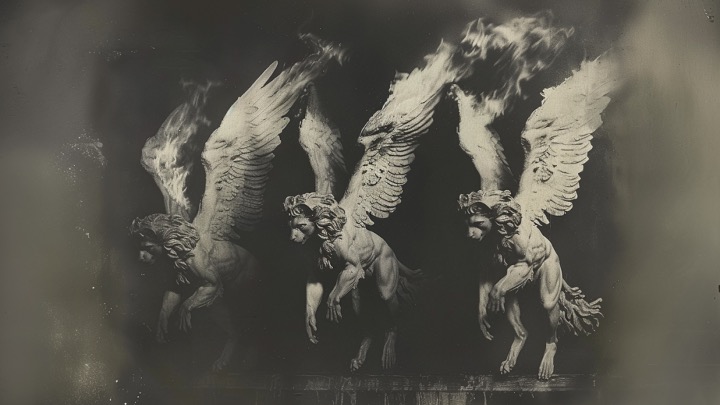
This joins a long tradition of trying to capture the imagery here — here is someone’s attempt from the 16th century — and I reckon when we do this we might be pointing the camera at the wrong bit of the picture — but also I think we are trying to represent beings from a reality outside ours in ways the descriptions do not quite let us. Ezekiel is stretching language to its limits to describe images he saw — and there is this word that is at the heart of what we are trying to do with our imaginations this series that is important — Ezekiel is imagining and trying to describe something ineffable; something beyond our ability to describe in words — but using evocative picture language to spark our imaginations and push us to our limits.
But the thing is — people reading or hearing this vision in the time Ezekiel is speaking know exactly what he is describing. This is where we need a bridge — it is as foreign to us as solar panels are to him.
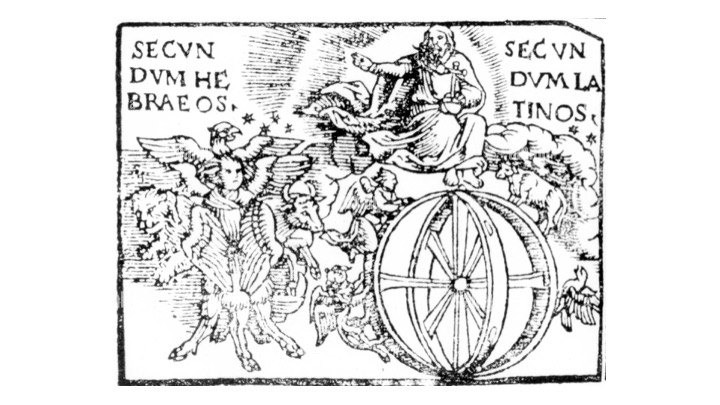
Israel’s neighbours all had versions of these winged creatures — and lots of them played a task of being the chariot pullers for god-kings. So here is an inscription image from Megiddo — a city that will ultimately become part of Israel — where a member of the royal family is riding a chariot pulled by a winged creature.
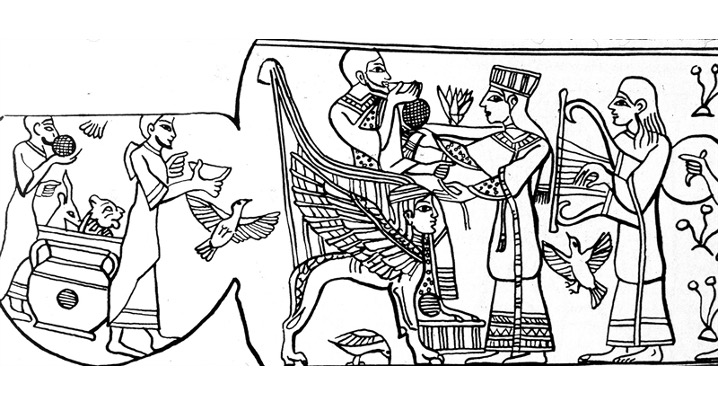
But — more importantly — people from Israel know what these four creatures are, because they are living, flying versions of the creatures from the throne room of God. They are cherubim — which is what Ezekiel will actually call them in chapter 10:
“Each of the cherubim had four faces: One face was that of a cherub, the second the face of a human being, the third the face of a lion, and the fourth the face of an eagle.”
— Ezekiel 10:14
And there are four of them because in the holy of holies — around God’s throne — there are four cherubim (Ezekiel 1:8-9). The two giant ones covered in gold (1 Kings 6:23, 28), whose wings touch above the ark (1 Kings 8:6). And there are two on the ark lid whose wings reach over the lid and touch as they represent holding up God’s throne (Exodus 25:18, 22).
Ezekiel is seeing the reality represented by these statues. This is why we are seeing four cherubim — and in his vision these are burning too; the fire and lightning that accompanies Yahweh as he travels on the cloud in the thunder is flashing among them as they speed around (Ezekiel 1:13-14). And they have got a job to do which has to do with these weird gyroscopic wheels. Wheels within wheels that are beside them — the wheels are sparkling; jewelled; majestic (Ezekiel 1:15-16). These creatures are chariot pullers — pulling this platform — on these crazy wheels that are also full of eyes. Where the cherubim go, the wheels go. There is a sort of spiritual bluetooth connection between the cherubim and the wheels of the throne-chariot (Ezekiel 1:17-20).
Above them there is this vault — a sort of crystal dome that might also get called a sea — and it might be part of what separates the heavens and the earth and the ground and sky waters in Genesis 1. The vault is sparkling and awesome.
This whole scene is vivid and multicoloured and multimedia and it is meant to stretch the language about power and beauty and grandeur to its limits (Ezekiel 1:22-23). God’s throne is on the vault, and there is the same blue crystal — lapis lazuli that Moses sees on the mountain top.
Our eyes are drawn upwards from the creatures, to the vault, to the throne, so we are not looking at the weird ineffable creatures — but this figure like that of a man. Now — it is tricky to know how to picture God — right — we are wrestling with something ineffable here because on the one hand we are told God is the one in whom we live and breathe and have our being of raw power — who has no form — a sort of infinite and omnipresent grounds of being — and then at the same time, right from the first page of the Bible we are told humans are made in his image and likeness — and here Ezekiel is seeing this heavenly figure who is human-shaped — but not human. From his waist we have got the sort of molten metal that was at the heart of the cloud — full of fire — surrounded by the brilliant light we imagined in week 1. He is radiant; like a rainbow breaking through storm clouds. Overwhelming radiance.
And Ezekiel is in no doubt that this is the appearance of the likeness of the glory of the Lord; the personified glory of Yahweh. And so when he sees it he falls facedown — this is a picture of absolute awe-filled worship. Reverence. A certain sort of fearful respect (Ezekiel 1:26-28).
But he is encountering this vision of God’s glory not in his temple on Zion, but in Babylon.
God’s throne is mobile; it is not limited to the temple on the mountain — just like the ark went with Israel wherever they went between the exodus and the construction of the temple — God is able to move.
And actually, this encounter — this vivid vision of the ineffable God and his chariot throne in all its fiery, cloudy, lightning glory — with the colours of crystals and light and rainbows flashing around, as Yahweh is carried by his cherubim-throne pullers — this is a perspective setter for Ezekiel.
He is commissioned to go from meeting the glory of God in this vision of his heavenly throne room — in Babylon — to being sent to Israel — a rebellious nation — to tell them that their rebellion means God’s throne room is leaving the temple (Ezekiel 2:3). And Ezekiel could be terrified of these Israelites still in Jerusalem; their might and their power to harm him. But this perspective is meant to make this human opposition to God’s power and might small (Ezekiel 2:6).
And I wonder if sometimes this is the sort of perspective we are lacking — when human power, and humans who loom large in our lives, feel terrifying; like they have got too much control over our lives and our fates. We get caught up in people-pleasing or people-serving, or not being prepared to speak truth to power for God’s sake, or for the sake of the poor or the oppressed, because of the cost we might face in our earthly lives. Ezekiel’s antidote to this fear — and he is going to have to do a lot of confronting, symbolic stuff to carry this message to Israel — is this encounter with God’s glory and the knowledge that God is still enthroned and still ruling even as Babylon and its massive army crushes Jerusalem and the temple, and even as the political leaders of Israel reject his message and so also are crushed. Ezekiel is not to fear them because he has this perspective that God is enthroned among the cherubim; ruling not in a shadowy temple but in cosmic reality.
This picture of life before the throne — this encounter with the awesome, majestic, mountain-melting God — is what gives him perspective.
It is also a vision that is meant to give Israel perspective when they are in exile; when it looks like Babylonian power has won, and the gods of the nations — these other possible supernatural powers — might be more powerful than Yahweh. Ezekiel’s vision of God ruling — enthroned in heaven — even while his people are in Babylon is a vision shared in the book of Daniel — in Daniel 7 — which expands our vision of heaven.
This connects with an idea Paul touches on in Ephesians — that Jesus has been raised above all powers and dominions (Ephesians 1:19-21). It is a bit of a category breaker for us, but changing our understanding of heaven can challenge us to worship God; to fall before him, and to put the powers at work in the world — and the idols or other things we might choose to worship rather than worshipping God — into perspective.
The Old Testament talks about Yahweh not just as “Yahweh” — the name he gives Moses on the mountain — and not just as “Elohim” — a word for God — but as the Most High God. In one of the psalms we looked at earlier, he is “Yahweh Most High” (Psalm 18:13). Yahweh — Israel’s God, the maker of heaven and earth — is the ruler of all the heavenly beings, not just the earthly ones; the ruler of other powers that nations of the earth might have turned into gods and worshipped.
In Daniel, we get this vision of God ruling in the heavenly courtroom — the throne room — as the nations who worship these other powers go to war. Thrones — plural — are set in place, and the Ancient of Days — another way of speaking about God — takes his seat. It is a heavenly council meeting (Daniel 7:9; cf. Psalm 82:1). He is glowing and bright — clothes white as snow; white hair. His throne is flaming with fire — and it has wheels; this is his chariot throne like in Ezekiel — the wheels are ablaze (Daniel 7:9). A river of fire is flowing, and he is attended by hundreds of thousands in this heavenly court (Daniel 7:10).
As judgment is handed down — as God’s rule is displayed — a figure enters the throne room: one like a son of man who comes with the clouds of heaven — like Yahweh does in the visions in the Psalms and in Ezekiel. This is a human who looks like the glory of the Lord in Ezekiel. He is led into the presence of the Ancient of Days (Daniel 7:13), and this Son of Man is given authority and power over all nations; a dominion above every dominion. The rule that had been enjoyed by these other powers — now subjected to judgment — is given to this Son of Man (Daniel 7:14). As Daniel explains his vision he talks about a spiritual force that will rise up and animate armies to oppose God’s people, but the court will sit, and that power will be taken away and destroyed, and the rule given to the holy people of the Most High under the Son of Man who will rule an everlasting kingdom (Daniel 7:26-27).
For God’s people in Babylon, and then under foreign rulers, hearing these words — capturing this vision of God’s throne on wheels and God as ruler over all the other powers, gods of these nations — it is a reminder that they are where they are because they rejected God’s rule. But it does not mean their God is not the Most High, or is not ruling.
All of this could be empty if the kingdom had fizzled out in Babylon; if these words and images had just died out and been lost to history. But they have not. And while many want to take this heavenly vision and push it to a distant future with bits yet to be fulfilled, fulfilling this mission was the mission of Jesus — the human Son of Man — the heavenly human.
Have you noticed how Jesus picks up this same imagery from Ezekiel’s fiery clouds of glory — a sort of heavenly chariot — to describe his coming as the ruler of the heavenly court, commanding angels? In Mark’s Gospel: “At that time people will see the Son of Man coming in clouds with great power and glory. And he will send his angels and gather his elect from the four winds, from the ends of the earth to the ends of the heavens” (Mark 13:26-27).
This is not just a picture of his return to make all things new — there is a fun thing where the Greek word for “coming” can also mean “going.” In Luke’s Gospel, Jesus talks about a time when he, the Son of Man, will be like the lightning — more Ezekiel imagery (Luke 17:24). He says, “From now on the Son of Man will be seated at the right hand of God” — Daniel will be fulfilled (Luke 22:69).
In Acts, Luke leans into the coming/going idea as he describes Jesus ascending in the clouds to heaven, while the disciples gaze into heaven. Two heavenly men appear and ask, in effect, “Why are you looking into heaven?” They say this same Jesus who has been taken from earth into heaven will come back in the same way. He has not abandoned them; he is committed to this heaven-on-earth project (Acts 1:9-11).
As Acts unfolds, one of Jesus’ followers, Stephen, is killed — and it looks like worldly powers are winning. In that moment Luke tells us Daniel has been fulfilled: Stephen looks into heaven and sees Jesus there, the Son of Man enthroned with the glory of God (Acts 7:55).
Our vision of heaven is different to Ezekiel’s now because it includes this human king enthroned — as Ephesians says — above all the other powers that might try to shape our lives on earth (Ephesians 1:19-21). The writer of Hebrews describes Jesus as the radiant reflection of the glory of God — a high king enthroned in heaven, victorious and worthy of our worship (Hebrews 1:3).
This vision is meant to teach us that God has not abandoned us; that he is powerful and victorious — that consuming fire — but also that this power can now be approached without fear that we will be destroyed, and in a way that transforms us. We are invited to dwell in this power and have it set off a reaction in us — so that we are like metal that melts and is formed into living images of God; or like turbines that spin next to a nuclear reaction and turn on the lights in the world. We are invited into the throne room of God to encounter this power on the throne in ways that stop us worshipping — giving our hearts — to any other bright light or imagined power. This helps us see humans not as terrifying people who can rule our lives — even if there is a threat of harm — but to have the eyes of our hearts — our minds and imaginations — filled with the power and glory and majesty of God in ways that consume us and destroy, or refine away, the bits of us that do not reflect him, or the image of him we now see in Jesus.
I want to encourage you to pray; to enter the throne room, and to consider how when we pray we are coming to God’s throne in worship; and how when we sing — as those who sing before God’s throne; singing words like those in the Psalms that help us capture this imagery of God’s majestic power, it’s designed to transform our hearts and send us out into the world like electricity from a nuclear reaction.
